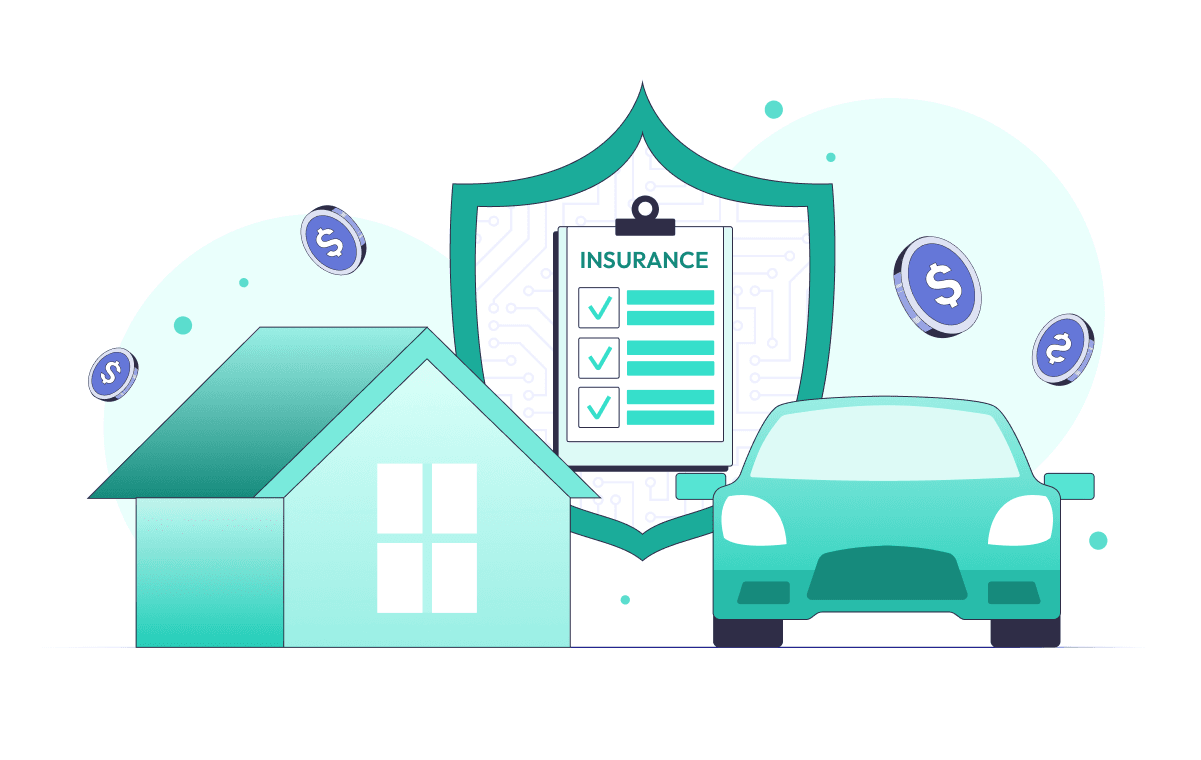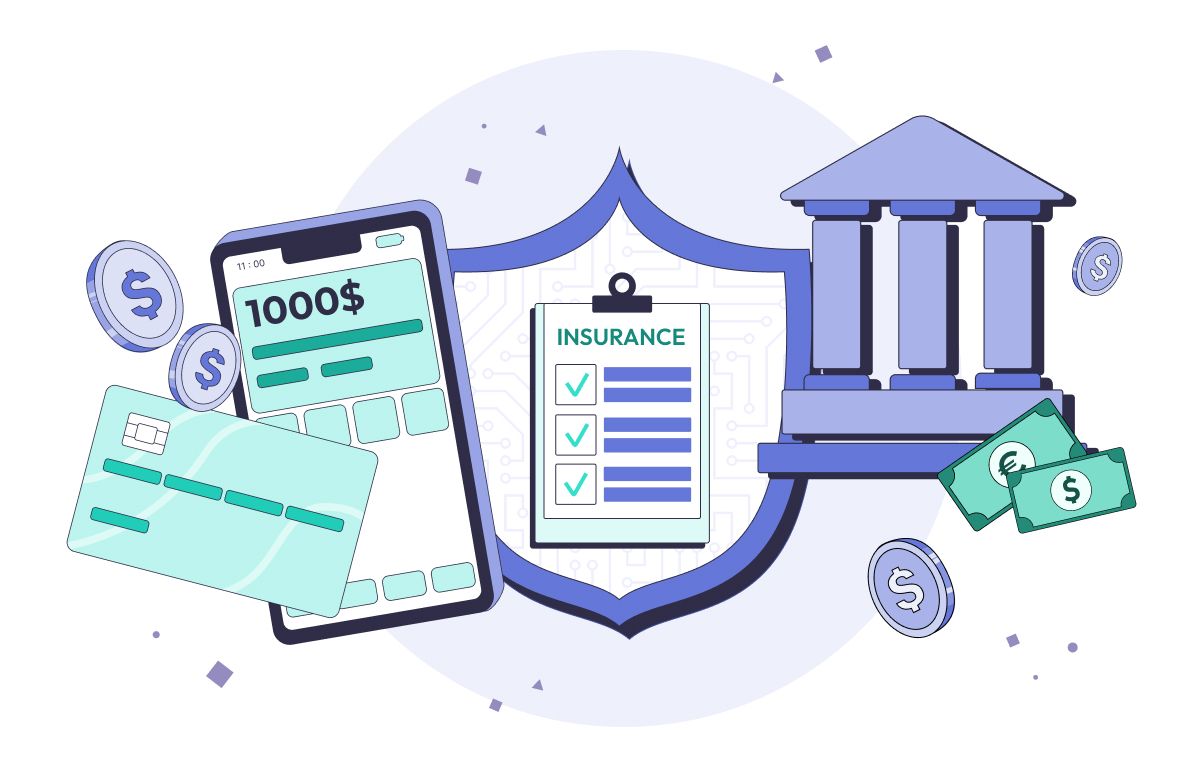Updated Dec 23, 2024 14 min read
Everything You Need to Know About How to Test Insurance Domain Application
Learn how to test insurance domain applications, covering key testing types, best practices, and tools to ensure security, compliance, and optimal performance for insurance apps.

In the insurance domain, the only constant is change. Regulations, processes, and compliance requirements evolve continuously, demanding technology solutions that can adapt to these dynamic industry needs.
Insurance applications are complex software systems that require thorough testing to ensure reliability. With upgrades to technology platforms, enhanced digital user experiences, and improved performance features, a skilled QA team is essential to maintaining high-quality standards. But where should you start? How can you effectively approach testing for insurance software?
In this article, we’ll walk you through how to test insurance domain applications, covering the best practices, tools, and various testing types that ensure a successful validation process for applications in the insurance industry.
What Are Insurance Domain Applications
Insurance domain applications are designed for essential tasks in the insurance industry, such as policy creation, billing, renewals, underwriting, and data management. These applications are built to help companies comply with strict regulations and protect sensitive consumer data. QA teams play a critical role in validating these applications, ensuring they meet industry standards in areas like security, performance, quality, durability, and user experience.
Key Components of Insurance Applications
Insurance companies operate across various business areas, each with unique standards and procedures that must adhere to regulatory requirements. QA engineers must thoroughly test the following critical components of insurance applications:
Underwriting System
Underwriting involves assessing the risks of insuring a potential customer before approving their application. This process examines criteria such as driving history, medical records, lifestyle, residence, employability, and income to determine a premium. QA teams must test the following underwriting system modules:
- Admin Module: Tracks and enforces complex business rules, helping underwriters adhere to risk assessment guidelines.
- Guidelines Module: Ensures underwriters can follow predefined parameters to evaluate risks effectively.
Quote System
Once customer risks are assessed, a premium quote is generated. This process involves sending customer details and risk profiles to carriers, who calculate premium options. QA specialists create test cases for quote systems should validate:
- Policy effective dates.
- The alignment of plans with customer needs.
- Rate structures used for quote generation.
Case Management
After a quote is shared with the customer and accepted, informal requests are sent to carriers, who analyze the details and provide tentative offers. Final offers are communicated to the customer, and a formal request is sent to the carrier. Testers should verify the accuracy of information exchanges and the seamless progression from quote generation to finalized policies.
Why Insurance Domain Application Testing Matters
Insurance applications handle sensitive data, legal compliance, and diverse user needs. Practical software testing insurance domain applications ensures:
- Data security: Protecting sensitive customer information from breaches ( looking to safeguard your application against vulnerabilities? Alongside other testing solutions, we offer comprehensive security testing services to protect your digital products against breaches and cyber threats. Our experts are here to secure your software and boost user confidence).
- Regulatory compliance: Meeting industry standards and regulations.
- Operational reliability: Maintaining smooth functionality across all modules.
- User satisfaction: Providing intuitive and seamless user experiences.
Testing insurance domain applications helps maintain the integrity and functionality of insurance applications while meeting industry standards.
How To Test Insurance Domain Application
Insurance domain applications are complex systems composed of numerous subsystems, each responsible for a specific operation. Ensuring overall quality requires verifying the performance of these subsystems both independently and as a cohesive unit.
A Framework of an Insurance Application
The foundation of an insurance application lies in its framework, which integrates various components, data flows, and communication protocols. This framework enables seamless interaction between the individual modules within the application. Below is a typical example of how an insurance app framework might be structured.


In conclusion, testing insurance domain applications helps ensure app reliability, security, and regulatory compliance. A thorough approach to testing each subsystem, from policy management to claims and underwriting, maintains the integrity of the entire system. By systematically validating each module and addressing potential vulnerabilities, insurance companies can enhance operational efficiency, protect sensitive data, and provide a seamless experience for users.
Contact us for expert insurance application testing services.
Types of Testing for Insurance Domain Applications
Insurance domain application testing ensures that insurance applications meet all business and regulatory requirements while functioning seamlessly. These applications often deal with sensitive data such as personal information, claims, and policy management, meaning testing must be thorough and precise. Testing helps identify and resolve issues before deployment, ensuring better performance, security, and compliance. Here are the types of testing essential for insurance domain applications:

These testing types are critical in delivering a reliable, secure, and compliant insurance application that meets both user and regulatory requirements. Each type of testing addresses specific needs within the application lifecycle and should be performed regularly for optimal results.
Comprehensive Guide to Testing Insurance Applications
Testing insurance domain applications is a complex but critical process, ensuring that these applications function reliably, securely, and comply with regulatory standards. In an industry where sensitive customer data, legal requirements, and operational efficiency are paramount, thorough testing is essential for maintaining trust and performance. Our team has prepared a comprehensive guide on testing insurance domain applications, focusing on key areas such as functional testing, security, performance, compliance, and integration. By addressing these areas, businesses can ensure that their insurance applications provide users with a seamless, secure, and compliant experience.
Functional Testing for Core Insurance Features
Functional testing is the first step in how to test insurance domain applications. This involves verifying that all core functionalities of the application work as intended. Key areas to focus on include:
- Policy management: Test the ability to create, edit, and renew policies.
- Claims processing: Ensure that claims are tracked, processed, and validated correctly.
- Underwriting processes: Validate that underwriting rules and algorithms are applied accurately based on customer data.
Security Testing to Protect Sensitive Data
In the insurance industry, protecting customer data is a top priority. To test insurance domain applications effectively, ensure that:
- Data encryption: All sensitive customer data is encrypted in transit and at rest.
- Access control: Ensure that the system uses role-based access controls to limit access to confidential data.
- Penetration testing: Regularly conduct penetration tests to identify vulnerabilities and mitigate potential threats.
Performance Testing for High Traffic Scenarios
Performance testing is a vital aspect of how to test insurance domain applications, especially since insurance applications handle large volumes of transactions during peak periods. You can use tools like JMeter or LoadRunner to simulate heavy traffic and evaluate:
- Response time: Ensure the application responds quickly to user inputs, even during high traffic.
- Scalability: Test the system’s ability to scale up as the number of users increases.
Compliance Testing for Regulatory Standards
Compliance is a significant consideration in the insurance industry. When testing insurance domain applications, verifying that the application adheres to industry regulations like GDPR, HIPAA, and other local regulations governing insurance practices is crucial. This includes:
- Data retention policies: Test to ensure the system properly retains and deletes customer data according to compliance standards.
- Reporting Compliance: Verify that reports generated by the system align with regulatory requirements.
Integration Testing for Seamless Workflow
Insurance applications must often integrate with CRM, payment gateways, and document management systems. When figuring out how to test insurance domain applications, make sure that:
- CRM integration: Test the seamless transfer of customer data between insurance applications and CRM systems.
- Payment gateway integration: Ensure premium payments are processed correctly through external payment systems.
- Document management: Verify that policies, claims, and customer correspondence are stored and retrieved without errors.
Testing insurance domain applications is essential for ensuring the seamless operation, security, and compliance of complex systems that manage sensitive data. Proper testing mitigates risks, enhances user satisfaction, and supports long-term operational success.
The Importance of Automated Testing in the Insurance Domain
As highlighted in a Deloitte report, the insurance industry is experiencing significant disruption due to technological advancements. Traditional business models in the sector are under pressure to evolve and adapt to new demands. The complexity of insurance applications, which often include policy management, claims processing, underwriting, and compliance requirements, makes testing particularly challenging. However, automating these testing processes can help overcome many of these obstacles. By automating the testing of insurance applications, companies can achieve several key advantages:
- Efficiency: Automation can help reduce the testing time required for repetitive tasks, enabling testers to focus on more complex and high-priority areas.
- Consistency: Automation ensures that tests are run the same manner each time, providing consistent results and reducing the risk of human error.
- Cost savings: While the initial investment in automation tools may be high, the long-term savings on manual testing efforts and quicker release cycles make automation an effective cost-saving strategy.
- Improved accuracy: Automated tests eliminate the possibility of human errors, ensuring that tests are executed precisely as intended.
Automated testing is essential in the insurance domain. It drives efficiency, consistency, cost savings, and accuracy while meeting the demands of a rapidly evolving industry.
Challenges in Insurance Domain Application Testing
Testing insurance domain applications comes with its own set of challenges due to the unique requirements and complexities of the industry. Below are some of the most common obstacles faced in this field:
1. Dynamic Regulatory Environment
The insurance industry is heavily regulated, with frequent changes in laws and standards that vary by region. These regulations affect how applications are developed, particularly regarding data privacy, security, and reporting. Testing must be agile enough to keep pace with these changes to ensure ongoing compliance. Failure to comply can result in fines, legal repercussions, and a loss of customer trust.
2. Complex Business Rules
Insurance applications often handle complex business logic, from calculating premiums to determining claims eligibility. With a wide range of risk profiles and underwriting guidelines, testers must ensure the application handles every scenario correctly. Validating business rules can be time-consuming, as any oversight in rules or calculations can lead to incorrect policy information or financial discrepancies, which can affect both customers and the company.
3. Legacy System Integrations
Many insurance companies rely on older legacy systems that are difficult to integrate with modern applications. Testing interactions between these systems and newer technology can be challenging, as legacy systems may not always support the latest protocols or data formats. Ensuring smooth communication between these disparate systems while maintaining data accuracy is a critical challenge for QA teams.
4. High Data Volume
Insurance applications process large volumes of data, such as customer records, policy details, claims information, and financial transactions. Testing scalability and performance is essential to ensure the system can handle peak loads, especially during events like policy renewals or claims submissions. Advanced tools and techniques are needed to simulate large datasets and test the application's performance under high traffic and data demands.
Insurance applications process large volumes of data, such as customer records, policy details, claims information, and financial transactions. Testing scalability and performance is essential to ensure the system can handle peak loads, especially during events like policy renewals or claims submissions. Advanced tools and techniques are needed to simulate large datasets and test the application's performance under high traffic and data demands.
Best Practices for Testing Insurance Applications
To ensure the highest quality and efficiency in insurance applications, testing must be approached strategically, with a focus on the unique demands of the industry. The following best practices are essential for achieving thorough and effective insurance application testing:
Understand Domain-Specific Requirements
Thoroughly analyze the insurance domain's regulations, business processes, and requirements. This understanding is crucial for creating tailored test cases that address specific legal and operational needs.
Prioritize Critical Modules
Focus testing efforts on high-risk and mission-critical areas of the application, such as claims processing, underwriting, policy management, and premium calculation. Ensuring these core functions work seamlessly is essential to the application's overall success.
Leverage Automation Tools
Implement automation for repetitive and high-volume tasks to improve testing efficiency. Tools like Postman are excellent for API testing, particularly in areas such as payment gateways, policy renewals, and claims submission. Automation ensures consistency and allows for continuous testing, which is especially important in large-scale applications with frequent updates.
Collaborate with Stakeholders
Engage with business analysts, developers, and other key stakeholders throughout the testing process. Collaboration helps refine test strategies, improve test coverage, and ensure that both functional and regulatory requirements are met.
Maintain Comprehensive Documentation
Keep detailed records of all test cases, test results, and scenarios. Documentation is essential not only for ensuring traceability and meeting regulatory compliance requirements but also for streamlining future testing cycles and facilitating the onboarding of new team members.
By following these best practices, insurance companies can ensure that their applications not only meet functional requirements but also adhere to regulatory standards, deliver secure user experiences, and perform reliably under varying conditions. Comprehensive test planning, automation, and collaboration with stakeholders play a pivotal role in ensuring that insurance applications are robust, scalable, and compliant with the highest industry standards.
Conclusion
Insurance domain application testing is a critical process that demands a deep understanding of domain-specific complexities and technical proficiency. By understanding how to test insurance domain applications properly, using the right tools, and adhering to best practices, you can ensure that your insurance software meets the highest standards of quality and efficiency.
If you want to streamline your insurance application testing, ensure compliance, and deliver a seamless user experience, our team at Luxe Quality is here to help. With extensive experience in testing insurance domain applications, we offer tailored solutions to meet your needs. Contact us today to discuss how we can support your testing goals and elevate your software's quality.
Comments
There are no comments yet. Be the first one to share your opinion!
For 8 years, we have helped more than 200+ companies to create a really high-quality product for the needs of customers.
- Quick Start
- Free Trial
- Top-Notch Technologies
- Hire One - Get A Full Team
Was this article helpful to you?
Looking for reliable Software Testing company?
Let's make a quality product! Tell us about your project, and we will prepare an individual solution.
It ensures data integrity across modules within an insurance application by imposing stringent validation rules for data input. The modules are kept in sync, with data storage and retrieval consistency. Integration testing regularly checks if the data flows appropriately among different modules. Audit logs are crucial to tracking changes and finding any probable errors. Automated testing means constant validation of data integrity, and version control systems provide data recovery in case of failures.
It could cover popular tools for functional testing, security testing, performance testing, and automation tools such as JMeter, Postman, and others.
Domain analysis testing involves understanding a particular domain's rules, processes, and requirements (e.g., insurance) to create relevant and accurate test cases.
An example would be validating an underwriting system's ability to calculate premiums based on risk factors like medical history and driving records.
Software testing identifies application defects, while quality assurance ensures that software development meets quality standards.




